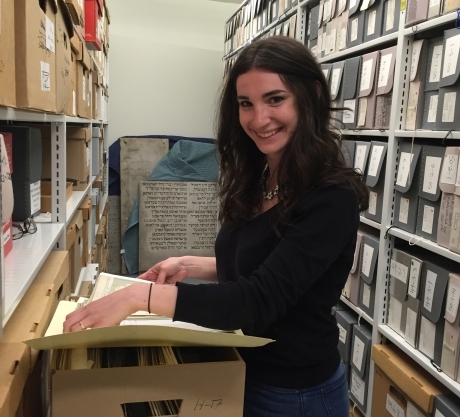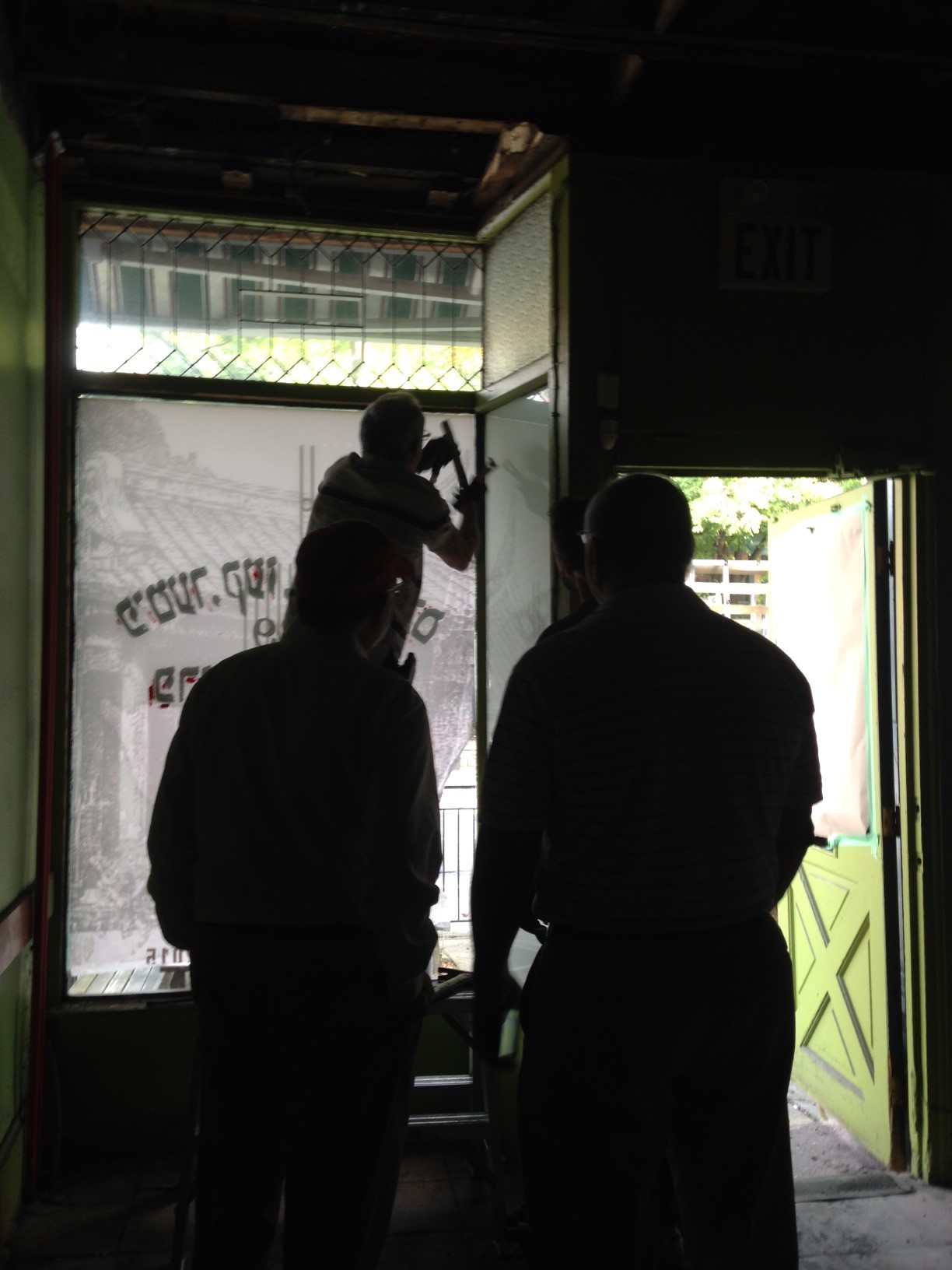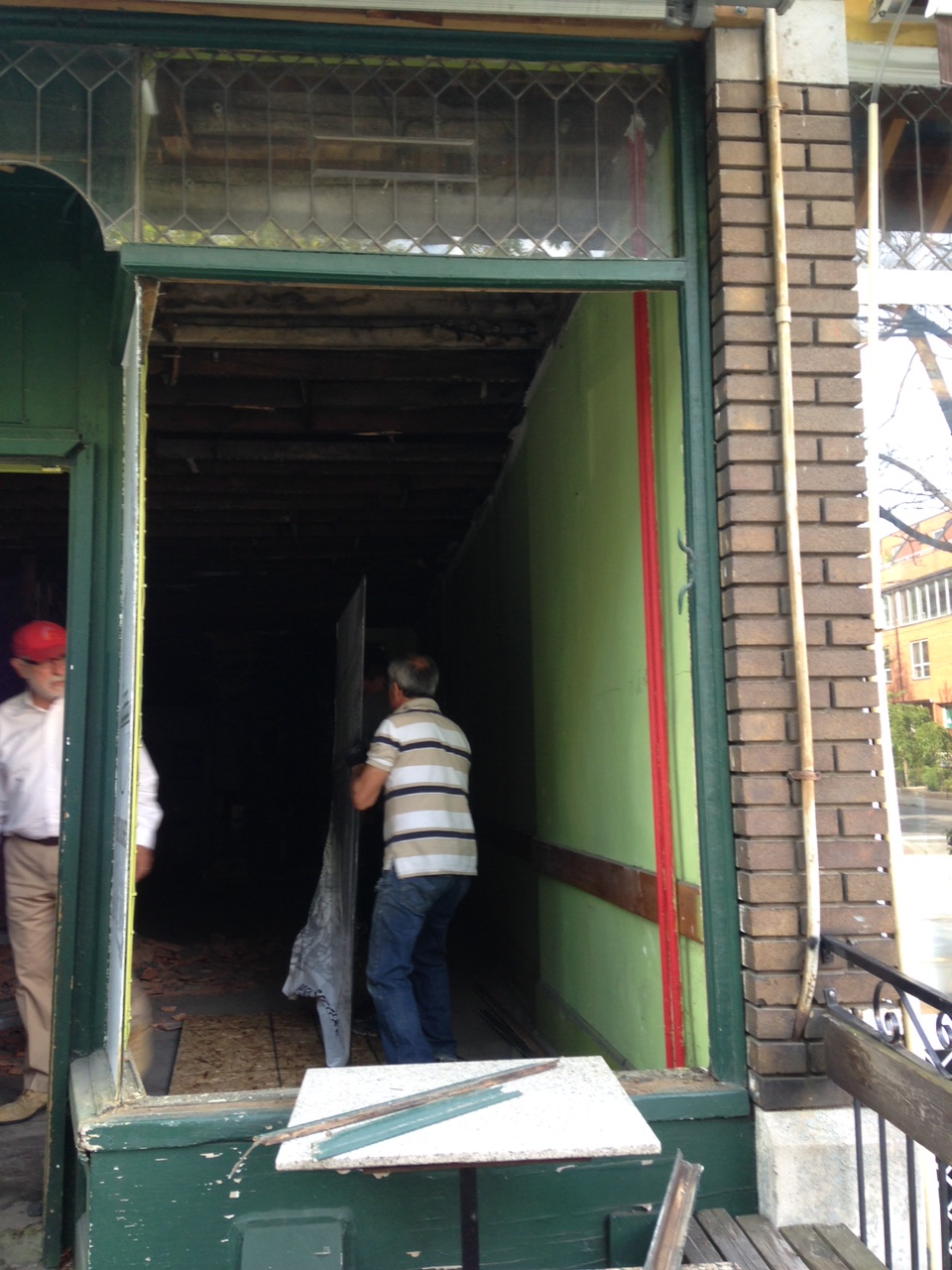Intersections in the Archives: Finding my Bubbie’s Handwriting in the OJA Collection
Ontario Jewish Archives, Toronto. 11 Nisan 5776.
Three days until the first seder, and I’m sifting through Box 45-7 H-16, feeling vaguely rushed. There’s no real urgency, but somehow the days just before Passover always seem shorter. Maybe it’s all the cooking and preparing and paranoid cleaning. But there’s always that sense of rushing toward something you’ve anticipated, and then it happening so quickly you don’t even get to enjoy those last few moments of waiting. I bet the Exodus felt the same way, but with the added disappointment of wasting so much perfectly good dough.
Thumbing through Box 45-7 H-16, I’m skimming past folders and folders. I’m looking for files with Yiddish on them, but I’ll stop if something else seems interesting. “Orphanage – Poland” doesn’t strike me at first (it’s too tangential to my search, not relevant enough, not Yiddish), but as I glance past I notice the pages are a thick faded blue cardstock – rare, in this collection. I pause and pull the folder, a collection of files on kids in an orphanage in Poland after the war. The documents are in Polish, but attached to each file is a handwritten English translation. Skimming a few, I take note of the English handwriting: not the looped rhythmic patterns of the Palmer Method, but a kind of jagged cursive with the harsher edges and points that I associate with early 20th-century European penmanship. My Polish grandmother wrote in exactly the same style. It always seemed messy to me, but suddenly I realize that it must have been taught; clearly other Polish-speakers also wrote this way. I take a quick snapshot of the file and make a mental note to mention this later to my mother, who will appreciate both the sobering content of the documents and the handwriting quirk, and file the folder back into its box, return it to its shelf, and move on to the next H-box on Shelf 45-7. There is more Yiddish in H-17 and H-18.
As I walk out of the archive, I remember to text my mother the photo. “Just like Bubbie’s handwriting!” I write. “It was a style.” “Gott in himmel!!!” she responds, “How could that NOT be her writing!?!!?” A few minutes later I send her another larger handwriting sample and then a photo of one of the blue orphan files. “From a collection of files on kids in an orphanage in Poland. Most born in 1936-1942,” I say. And she says, “Omg. That’s my mom’s.”
My mother remembers, sometime in the 1990s, her mother intersecting with the owner of a photo album from this orphanage, and later, with the owner of these files, and she remembers her translating them into English. My grandmother often did translation work; we’ve lost track of most of it. But on this particular day, in this particular H-box, I went looking for Yiddish documents, and instead stumbled onto my own grandmother’s handwriting – and recognized it. The only question now is whether I can recognize my responsibility to do something with it, to finish the story or at least find out where it begins.


